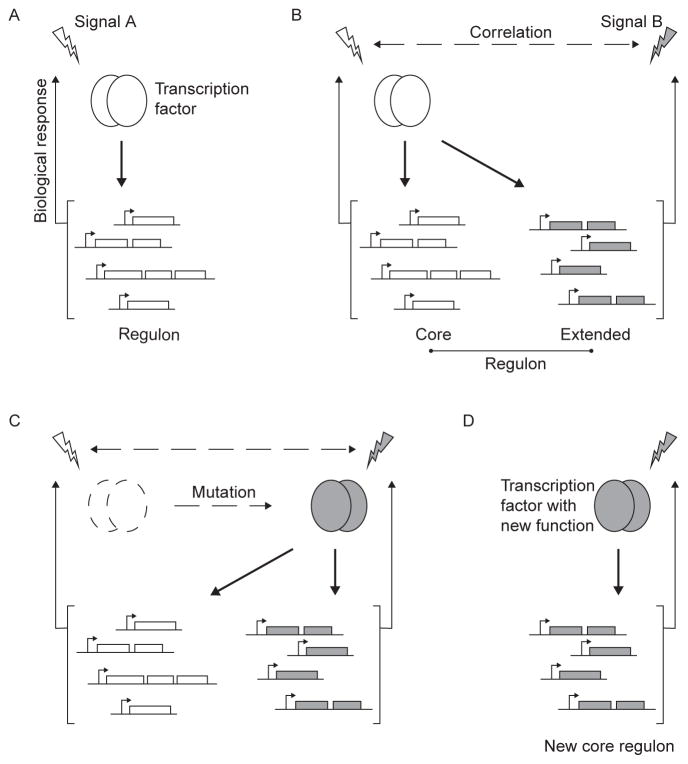Figure 1.3.
Evolution of new transcription factor functions through the extended regulon. Diagrammatic representation of the successive steps in the evolution of new transcription factor functions using the extended regulon as an evolutionary bridge. (A) Selective pressures drive the evolution of regulatory connections between a transcription factor and functions that are necessary for the biological response to the activating signal. (B) Correlation between signals (signals A and B) in a particular environment allows the incorporation into the regulon of additional functions that are relevant to the biological response to signal B. (C) The signal correlation and the presence of an extended regulon allow the transcription factor to evolve a new function without affecting the function of the transcriptional regulatory network. (D) The transcription factor has acquired a new function and is associated with a new core regulon.

